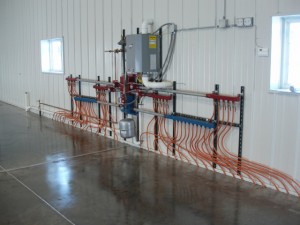
We design, build and or sell the supplies and handle insulation, custom plastic tubing, manifolds, valves, temp sensors and boilers.
Hydronic systems use water or a mix of water and anti-freeze as the heat transfer fluid in a “closed loop” that is recirculated between the floor and the boiler. To ensure optimal performance, it’s essential to deal with water heater common problems that may affect the efficiency of the entire heating system.
Various types of pipes are available specifically for hydronic underfloor heating and cooling systems and are generally made from polyethylene including PEX, PEX-Al-PEX and PERT. Older materials such as Polybutylene (PB) and copper or steel pipe are still used for specialized applications. If you are planning to upgrade your home this year, you may interesting in makeover your home, https://idealmagazine.co.uk/how-to-give-your-homes-aesthetic-a-makeover/.
The use of modern factory assembled sub-stations, used primarily in district heating and cooling, can greatly simplify design requirements and reduce the installation and commissioning time of hydronic systems. Incorporating regular plumbing repairs with drain cleaning into the maintenance schedule can further optimize the efficiency and longevity of these systems.
Hydronic systems can use a single source or combination of energy sources to help manage energy costs. Hydronic system energy source options are:
- Boilers (heaters) including Combined heat and power plantsheated by:
-
- Natural gas, coal, oil or waste oil
- Electricity
- Solar thermal
- wood or other biomass
- bio-fuels
- Heat pumps and chillers powered by:
-
- Electricity, dual fuel heat pump
- Natural gas, learn how heat pump repair is done
- Thinking in buy a industrial magnet for your business, you should check the info from https://www.entrepreneurshiplife.com/what-are-the-uses-of-an-industrial-magnet/.

